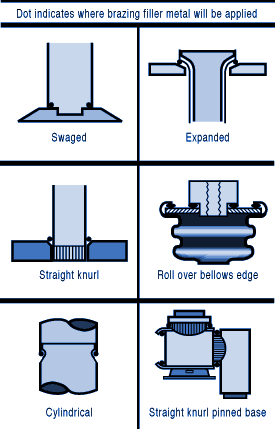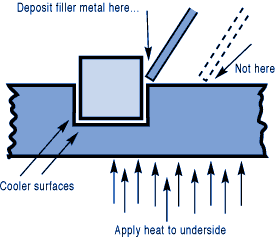Background
Brazing is the process of joining two different metal objects together using a filler metal. The metal pieces can be the same or of different material. The filler metal is melted around the metal pieces.
There are many different types of brazing. The four main ones are manual (otherwise known as torch), induction, resistance, and vacuum brazing. The most common type is manual, so the information here applies primarily to torch blazing.
Different fuels can be used as well. The most common is an oxy/acetylene mixture, but others include natural gas, propane, and propylene.
Safety
When working with very hot metals, safety is the number one priority. The basics include having the proper eye protection and wearing the proper gloves.
It is also important to clean your metals thoroughly and to ventilate your workspace. This can help prevent unwanted combustion.
When working with oxygen and acetylene, it is imperative that the gases remain separated until the torch tip. This is because acetylene at a pressure higher than 15 psi will ignite upon contact with oxygen. Because of this, pressure regulators are necessary to ensure that everything is as it should be.
It is also necessary to have check valves and flash-back arrestors. This is to stop the gases from backflowing into the canisters, and to prevent combustion from reaching the cylinders.
How does it Work?
Once all safety checks are performed, it is time to start! The metals must be thoroughly cleaned and fluxed (using a water based flux). This is to prevent oxides from forming, and to help the filler metal flow better.
The metals are then brought close together (see this page for clearance tables and calculations), and they can be heated. Make sure to heat both parts thoroughly and uniformly. You can gauge the uniformity of the heating process by observing the change in the flux’s appearance.

Once this has been done, the filler metal can be placed at the joint, and capillary action will do the rest for you!

After the joint has hardened it is time to clean it. The flux can be removed with a hot water bath (assuming it was water based) and the oxides can be removed with cleaners (once again this page has the different removal types based on which metals you joined).
Campus Resources
Unfortunately students cannot braze on campus. However brazing can be done in the School of Art MetalShop so if you’re so inclined you can watch someone do it for you.
Sources
- https://en.wikipedia.org/wiki/Brazing
- https://www.lucasmilhaupt.com/EN/Brazing-Academy/Brazing-Fundamentals.htm
- http://www.art.cmu.edu/facilities/3d/
All images courtesy of Lucas Milhaupt

